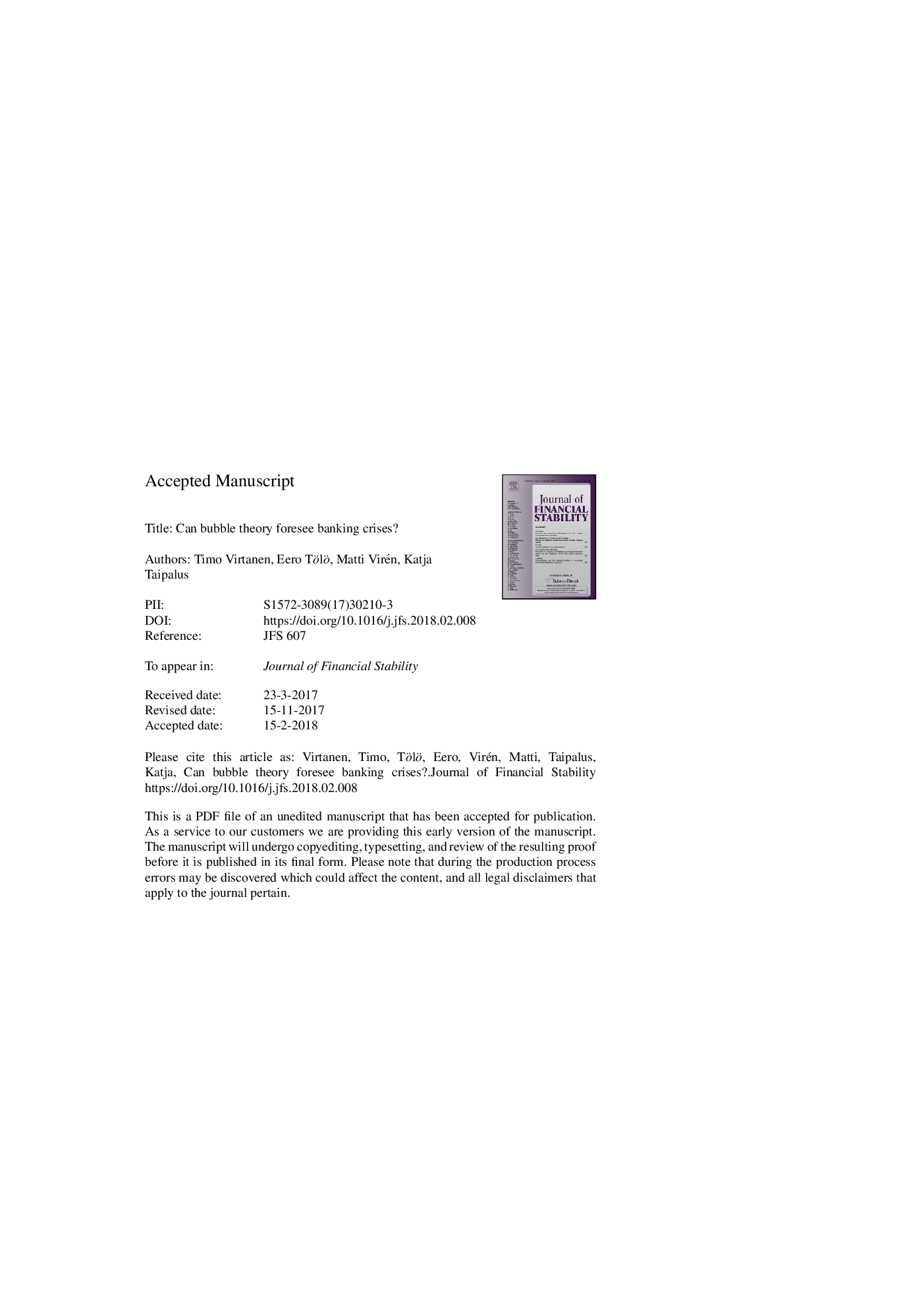| Article ID | Journal | Published Year | Pages | File Type |
|---|---|---|---|---|
| 7409025 | Journal of Financial Stability | 2018 | 41 Pages |
Abstract
We consider the effectiveness of unit root exuberance tests in predicting banking crises. Using a sample of 15 EU countries over the past three decades, our crisis dating follows the scheme of the European Systemic Risk Board. The exuberance indicators slightly outperform benchmark signaling and logit models. Variables based on credit- and debt-service are identified as better predictors than housing market variables, which in turn outperform stock market variables. The results corroborate the existing literature, which says financial crises are typically preceded by leveraged bubbles, and more specifically, that initial bubble signals from explosive growth in credit and asset prices are followed by a lift-off in debt-servicing costs as a financial crisis nears. The risk of financial crisis peaks just after the bubble bursts. Our results indicate that exuberance tests, which can be used in crisis prediction in a manner similar to conventional early warning models, may be readily incorporated into the toolkit of financial stability supervisors.
Keywords
Related Topics
Social Sciences and Humanities
Economics, Econometrics and Finance
Economics, Econometrics and Finance (General)
Authors
Timo Virtanen, Eero Tölö, Matti Virén, Katja Taipalus,
